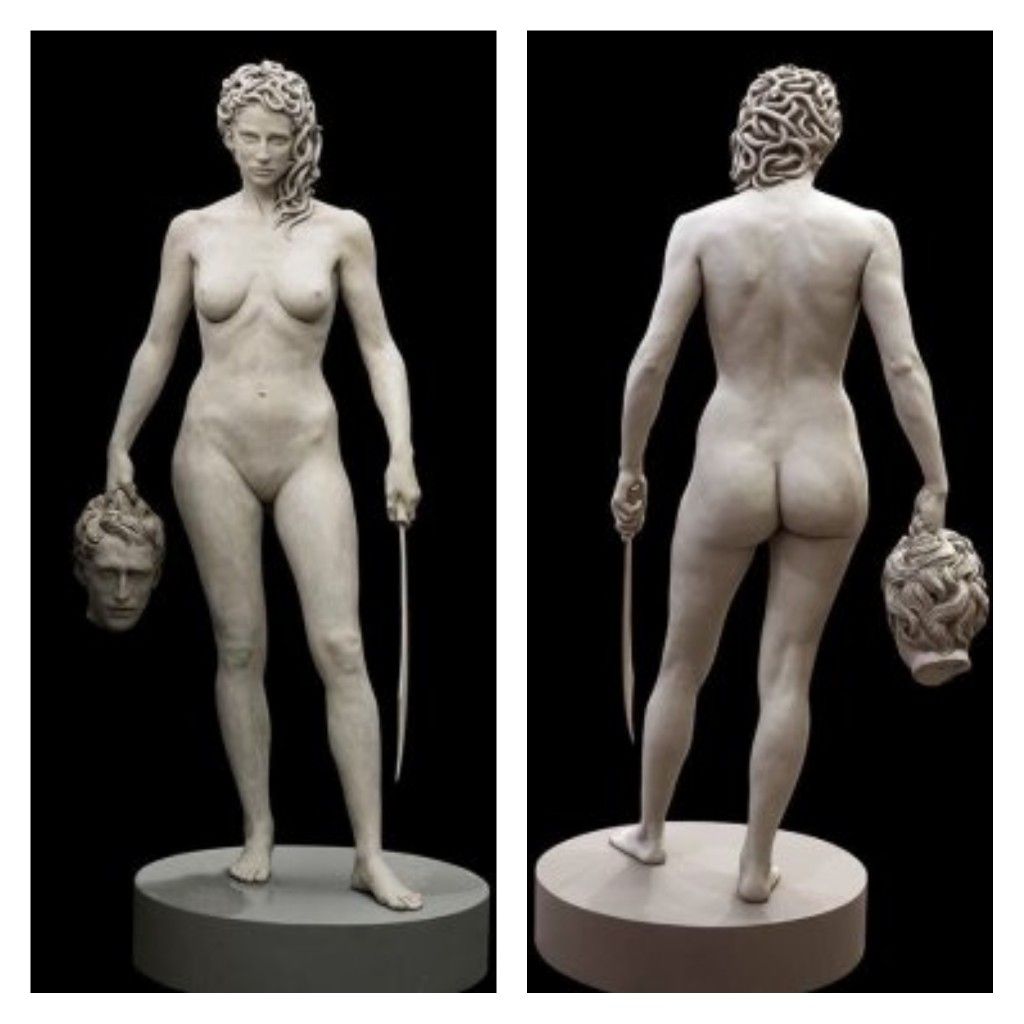Medusa, Perseus, and Me

by Phyllis Chesler
For years, I averted my eyes from the large Canova sculpture that stood at the top of the grand staircase at the Metropolitan Museum of Art. It was Perseus, holding the severed head of Medusa, the gorgon who had been a consecrated maiden in the Temple of Athena before she was raped by Poseiden. Perseus stares straight at her, a fearless, patriarchal hero who has just be-headed a woman feared, one thought of as a monster, and why? Because she had been granted the power to turn all who gazed upon her to stone.
Medusa was a rape victim who had been been given the power to defend herself from “the male gaze.” No man could ogle or rape Medusa ever again. And before my very eyes, such a woman—her head held aloft—is forever defeated. Defamed. I could not bear the sight of her beheading, even though Athena valorized Medusa by placing her countenance with its curly, snaky locks on Athena’s own shield.
Eventually, I’ll never know why, that sculpture was removed to Gallery 548.
And now, behold, Justice of a sort or at least a mythic, feminist reversal. An Argentine-Italian artist, Luciano Garbati, has created a seven-foot -tall bronze of Medusa holding Perseus’s severed head. It will be installed in the park opposite the New York County Criminal Court, the very Court where Harvey Weinstein stood trial. Garbati wrote: “The place chosen is not accidental, since there (is where) they judge cases for crimes related to violence against women.”
The sculpture has been criticized for its hairless, frontal nudity; because a male, not a female artist did the sculpture; and because it should have been Poseidin, the rapist, whose head Medusa is shown holding aloft.
I dunno. I rather like the sullen, sultry, all-too-frank gaze on the young and beautiful Medusa.